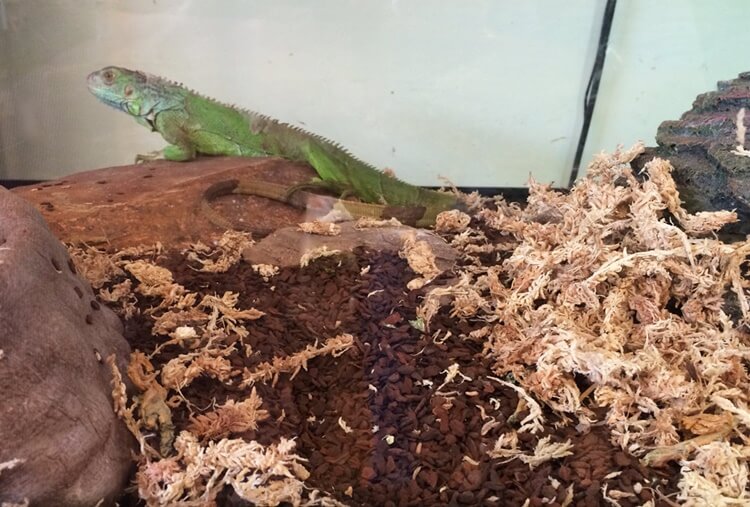Reptiles
New Zealand sphagnum moss is often used as a completely natural cage substrate for amphibians and wetland environment reptiles. It is great for use in humidifying shelters and serves as an excellent medium for use during egg laying and incubation. Additionally, sphagnum moss pulls double-duty as a substrate for the live plants that are often included in vivariums and naturalistic terrariums. As in other applications, Spagmoss’ market leading cleanliness and softness make it a joy to work with. Its durability means it can be washed and re-used several times.
Sphagnum moss is a vital part of any setup. Placed above the soil layer and below the leaf litter layer, sphagnum moss mimics the layer of decayed plant material found right above the soil layer in the tropical jungle. Sphagnum moss keeps the dirt off of your vivarium inhabitants and promotes a more humid soil layer while providing a home to beneficial microfauna.
Sphagnum moss can also be used as a standalone substrate for quarantine or temporary enclosures. Its natural anti-bacterial and anti-fungal properties, coupled with its ability to hold a vast amount of water, makes sphagnum moss an ideal temporary substrate for humidity loving amphibians. Sphagnum moss also makes a great reptile substrate for humid hides, providing much needed moisture to a wide variety of reptiles, aiding in the shedding process.
Sphagnum moss supports the growth of live plants in vivariums and naturalistic terrariums. Epiphytes such as orchids, bromeliads and some species of fern will be happy with sphagnum moss only. For vining plants, cuttings can be placed on the layer of sphagnum and the plant will root into the underlying substrate.




